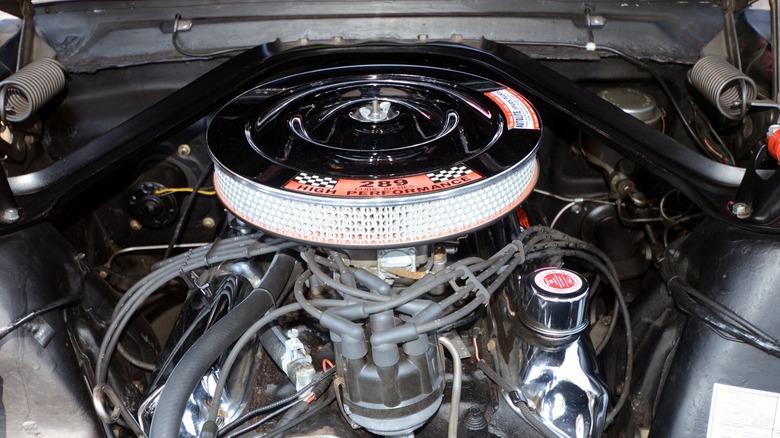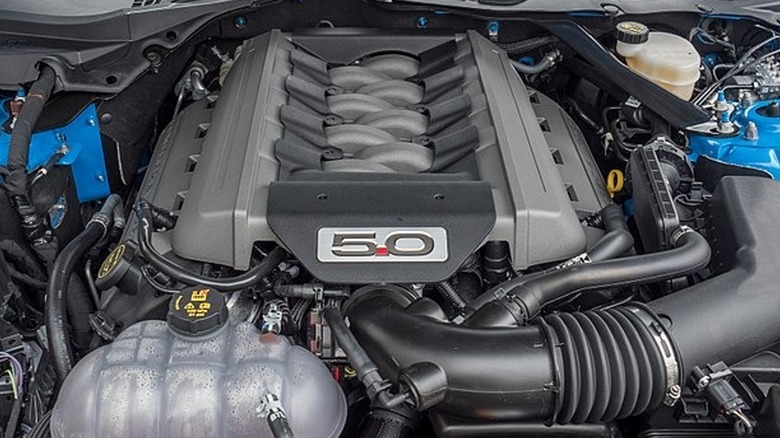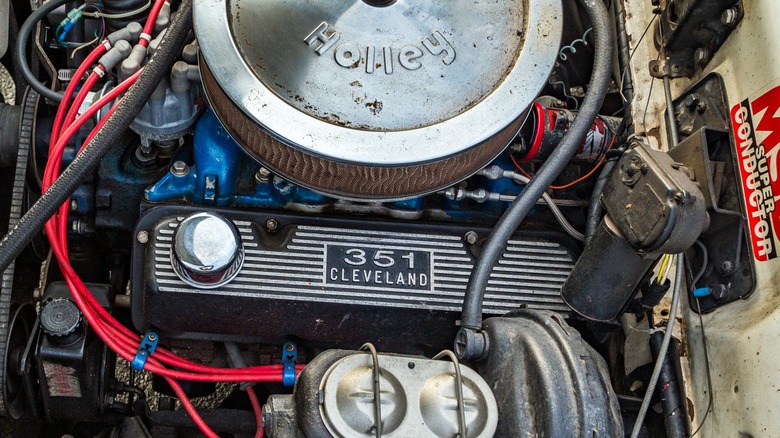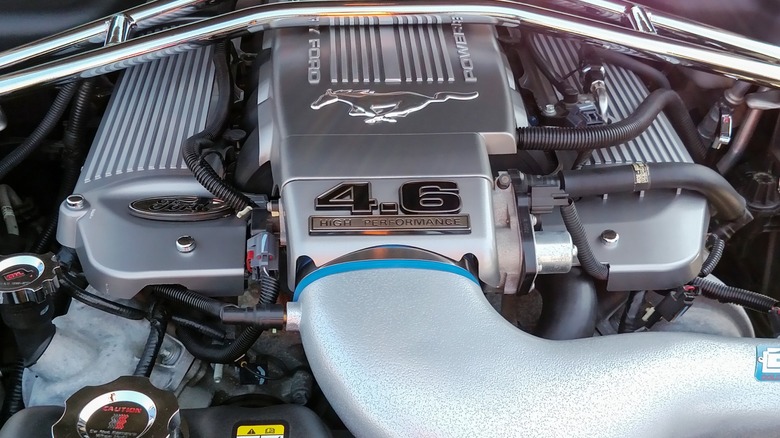3 Affordable Ford Engines That Deliver Impressive Power With Mods
Repairing the daily driver, building a dream-car project, or wrenching on your next flip requires staying within a budget to make it worthwhile and enjoyable. If you've got nearly $25K to throw at your engine build you could drop in the Ford Megazilla crate engine, or take a more affordable route and put the rest towards retirement. With a long list of Ford engines to choose from, finding one to fit your needs doesn't have to break the bank.
Going with an affordable option doesn't mean you have to skimp on horsepower either. There are several ways to get more horsepower out of nearly any Ford engine. Expensive crate engines simply eliminate the guesswork, providing what Ford thinks is the optimal combination of parts for the best performance. However, as an automaker, Ford's definition of performance often includes meeting CAFE Standards, outliving the warranty, and a general approach of producing the best engine for the general engine-buying crowd.
With a little leg work, some imagination, and a few modifications, you could have an affordable Ford engine that delivers impressive power for a lot less cash than a factory crate engine. There are any number of options available across the country for a budget Ford engine build, but let's take a look at three top contenders to spark your imagination.
302/5.0L
Nowadays when we think of the 5.0L our we often associate it with the Ford Coyote V8. While the 5.0 Coyote is a great engine, it's hard to justify it as affordable, even if pulling one from a wreck should be considerably more affordable than a crate engine from Ford Performance Parts.
Most of us remember a time before the Coyote, when the High-Performance 5.0 was the rage, or even further back to when the 302 succeeded the 289 as the powerplant for Ford's smaller sports cars. While the 289 is a fine candidate for adding power through aftermarket mods, its scarcity, especially in Hi-Po form, makes it less affordable.
A few years ago, MotorTrend staffers pulled a 5.0L V8 (available from at least one "Pick Your Part" salvage for under $500) from a junkyard 2000 Ford Explorer showing 120,000 miles on the odometer. In stock form the engine had electronic fuel injection, a 9.0:1 compression ratio, a 190-degree 0.450-inch lift camshaft (approximately), and good flowing GT40P cylinder heads. Cylinder head machine work included some minor porting, adding screw-in studs, and wider spring pockets, but maintained the original GT40P valve sizes.
Reassembled with upgraded head gaskets and ARP head studs, an Edelbrock Performer intake manifold and 750-cfm Holley carburetor, MSD ignition, and a slightly more aggressive Lunati roller camshaft, the junkyard 5.0 made 376 hp and 355 lb-ft of torque on the dyno. Adding nitrous brought power output to 503 hp.
[Featured image by Ermell via Wikimedia Commons | Cropped and scaled | CC BY-SA 4.0]
Ford's 351-cubic-inch options
Ford produced a trio of 351 cubic-inch options in the past carrying names like Windsor, Cleveland, and Modified. While the 351 Cleveland, built in Cleveland, Ohio, offered the best performance, its popularity makes it less affordable than the other 351s. The 351 Windsor is an attractive option since it uses the same bellhousing bolt pattern as the Cleveland and other Windsor, Ontario, built Ford engines like the 302.
Ford used the 351W in a variety of vehicles ranging from 1968 Mustangs to 1997 F-Series pickup trucks. While the late 1960s and early 1970s 351W blocks might be stronger, the 1990s blocks can withstand 500 horsepower and some came with roller cams.
One such 351W example plucked from the pages of a MotorTrend engine build features a 1990s roller cam truck engine acquired at zero cost. While that 351W was abused to the point of requiring an extensive rebuild, a low-mileage candidate could produce up to 505 hp with some aftermarket cylinder heads, flat-top pistons, a more aggressive roller cam, an MSD distributor, an aftermarket aluminum intake manifold, and a high volume carburetor such as the Holley 1,000 hp.
The 4.6L Three-Valve V8
Our final contender is the much maligned 4.6L Three-Valve V8. While the 4.6 receives angry jabs from the 5.0 Mustang faithful, MotorTrend points out that it was included in Ward's 10 Best Engines list from 2005 to 2008 without fail and carried on providing power to the Ford Mustang GT until the first-generation 5.0 Coyote replaced it in 2011.
In stock form the 4.6L 3V V8 makes around 300 hp. However, since you'll likely acquire one of these in a Mustang approaching at least 15 years of age, it could benefit from a refresh. So, while you're at it, you might as well fit it with a forged-steel 3.75-inch stroker crankshaft from Lunati, forged H-beam connecting rods, and forged flat-top pistons with a 10.2:1 compression ratio. Enlarging the cylinder bore diameters by 0.020-inch and adding the stroker crank increases the displacement from 281 cubic inches to around 301 (4.93L).
MotorTrend did just that to a $500 4.6L 3V V8 in 2014, and with a few other goodies bumped its projected horsepower to 400+. In addition to fresh valves, the stock heads got new Lunati Voodoo hydraulic roller camshafts with 112-degrees of lobe separation, roughly 0.500-inch gross lift, and over 230-degrees of duration. They also replaced the stock intake manifold with a composite intake from Ford Racing for good measure.



